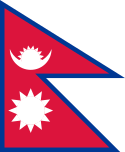Azjatycki Bank Rozwoju
 | |
| Język roboczy | angielski |
|---|---|
| Siedziba | |
| Członkowie | 67 krajów |
| Prezes | Takehiko Nakao |
| Utworzenie | 19 grudnia 1966 |
| Strona internetowa | |
Azjatycki Bank Rozwoju (ADB, AsDB, ang. Asian Development Bank) – finansowa organizacja międzynarodowa, która powstała w 1966 roku w celu wspierania rozwoju gospodarczego i polepszenia warunków życia w rozwijających się państwach azjatyckich.
Główna siedziba organizacji mieści się w Mandaluyong, w obszarze metropolitalnym Metro Manila, na Filipinach.
Członkowie
Do organizacji należy 67 państw i terytoriów, z czego 48 leży w regionie Azji i Pacyfiku, a 19 poza tym obszarem.
W nawiasach podano rok wstąpienia do organizacji.
Region Azji i Pacyfiku:
 Afganistan (1966)
Afganistan (1966) Australia (1966)
Australia (1966) Filipiny (1966)
Filipiny (1966) Indie (1966)
Indie (1966) Indonezja (1966)
Indonezja (1966) Japonia (1966)
Japonia (1966) Kambodża (1966)
Kambodża (1966) Korea Południowa (1966)
Korea Południowa (1966) Laos (1966)
Laos (1966) Malezja (1966)
Malezja (1966) Nepal (1966)
Nepal (1966) Nowa Zelandia (1966)
Nowa Zelandia (1966) Pakistan (1966)
Pakistan (1966) Tajwan[1] (1966)
Tajwan[1] (1966) Samoa (1966)
Samoa (1966) Singapur (1966)
Singapur (1966) Sri Lanka (1966)
Sri Lanka (1966) Tajlandia (1966)
Tajlandia (1966) Wietnam (1966)
Wietnam (1966) Hongkong[2] (1969)
Hongkong[2] (1969) Fidżi (1970)
Fidżi (1970) Papua-Nowa Gwinea (1971)
Papua-Nowa Gwinea (1971) Tonga (1972)
Tonga (1972) Bangladesz (1973)
Bangladesz (1973) Mjanma (1973)
Mjanma (1973) Wyspy Salomona (1973)
Wyspy Salomona (1973) Kiribati (1974)
Kiribati (1974) Wyspy Cooka (1976)
Wyspy Cooka (1976) Malediwy (1978)
Malediwy (1978) Vanuatu (1981)
Vanuatu (1981) Bhutan (1982)
Bhutan (1982) Chiny (1986)
Chiny (1986) Mikronezja (1990)
Mikronezja (1990) Wyspy Marshalla (1990)
Wyspy Marshalla (1990) Mongolia (1991)
Mongolia (1991) Nauru[3] (1991)
Nauru[3] (1991) Tuvalu (1993)
Tuvalu (1993) Kazachstan (1994)
Kazachstan (1994) Kirgistan (1994)
Kirgistan (1994) Uzbekistan (1995)
Uzbekistan (1995) Tadżykistan (1998)
Tadżykistan (1998) Azerbejdżan (1999)
Azerbejdżan (1999) Turkmenistan (2000)
Turkmenistan (2000) Timor Wschodni (2002)
Timor Wschodni (2002) Palau (2003)
Palau (2003) Armenia (2005)
Armenia (2005) Brunei (2006)
Brunei (2006) Gruzja (2007)
Gruzja (2007)
Inne regiony:
 Austria (1966)
Austria (1966) Belgia (1966)
Belgia (1966) Dania (1966)
Dania (1966) Finlandia (1966)
Finlandia (1966) Holandia (1966)
Holandia (1966) Kanada (1966)
Kanada (1966) Niemcy[4] (1966)
Niemcy[4] (1966) Norwegia (1966)
Norwegia (1966) Stany Zjednoczone (1966)
Stany Zjednoczone (1966) Szwecja (1966)
Szwecja (1966) Wielka Brytania (1966)
Wielka Brytania (1966) Włochy (1966)
Włochy (1966) Szwajcaria (1967)
Szwajcaria (1967) Francja (1970)
Francja (1970) Hiszpania (1986)
Hiszpania (1986) Turcja (1991)
Turcja (1991) Portugalia (2002)
Portugalia (2002) Luksemburg (2003)
Luksemburg (2003) Irlandia (2006)
Irlandia (2006)
Zobacz też
Przypisy
- ↑ Początkowo jako "Chiny", do czasu przystąpienia do organizacji Chińskiej Republiki Ludowej w 1986 roku.
- ↑ Początkowo jako brytyjskie terytorium zależne. Obecnie specjalny region autonomiczny Chińskiej Republiki Ludowej
- ↑ Asian Development Outlook 2009 Update: Nauru (ang.). adb.org. [dostęp 2010-02-01].
- ↑ Początkowo jedynie Niemcy Zachodnie.
Linki zewnętrzne
- Oficjalna strona internetowa (ang.)
Media użyte na tej stronie
The Flag of India. The colours are saffron, white and green. The navy blue wheel in the center of the flag has a diameter approximately the width of the white band and is called Ashoka's Dharma Chakra, with 24 spokes (after Ashoka, the Great). Each spoke depicts one hour of the day, portraying the prevalence of righteousness all 24 hours of it.
bendera Indonesia
Flag of Laos
Flag of New Zealand. Specification: http://www.mch.govt.nz/nzflag/description.html , quoting New Zealand Gazette, 27 June 1902.
The national flag of Kingdom of Thailand since September 2017; there are total of 3 colours:
- Red represents the blood spilt to protect Thailand’s independence and often more simply described as representing the nation.
- White represents the religion of Buddhism, the predominant religion of the nation
- Blue represents the monarchy of the nation, which is recognised as the centre of Thai hearts.
Flag of Maldives. The colours used are Pantone 186 C for red and Pantone 348 C for green.
The national flag of Nauru. Official Pantone colours are: PMS 280 blue, PMS 123 yellow.
Autor: Nightstallion (original)
Zscout370 (most recent), Licencja: CC0
Flag of Tuvalu.
Flaga Finlandii
The flag of Navassa Island is simply the United States flag. It does not have a "local" flag or "unofficial" flag; it is an uninhabited island. The version with a profile view was based on Flags of the World and as a fictional design has no status warranting a place on any Wiki. It was made up by a random person with no connection to the island, it has never flown on the island, and it has never received any sort of recognition or validation by any authority. The person quoted on that page has no authority to bestow a flag, "unofficial" or otherwise, on the island.
Autor: Pedro A. Gracia Fajardo, escudo de Manual de Imagen Institucional de la Administración General del Estado, Licencja: CC0
Flaga Hiszpanii
Flag of Portugal, created by Columbano Bordalo Pinheiro (1857-1929), officially adopted by Portuguese government in June 30th 1911 (in use since about November 1910). Color shades matching the RGB values officially reccomended here. (PMS values should be used for direct ink or textile; CMYK for 4-color offset printing on paper; this is an image for screen display, RGB should be used.)
map of Asian Development Bank members (Regional members in blue, non-regional members in red; based on Image:No colonies blank world map.png



































































